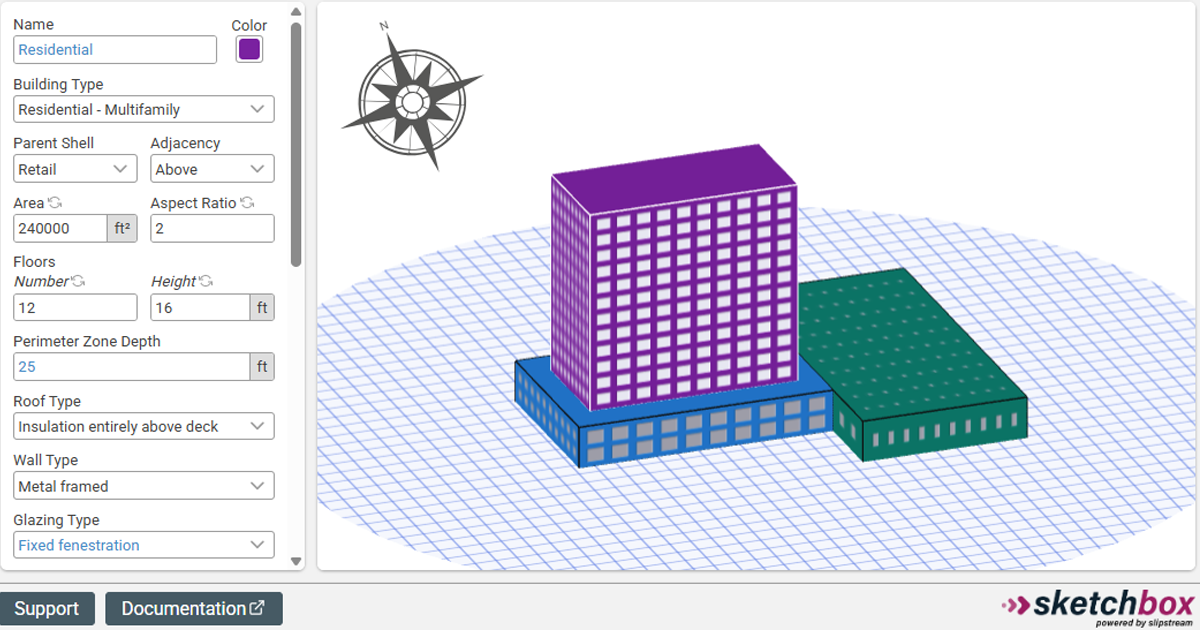
Making energy modeling easier and more accessible
More openness in energy modeling increases transparency and credibility, reduces wasteful double-work, and improves overall quality. This makes it easier for users to advance research and gain the highest benefit from energy modeling software.
Or at least, that’s what the Open Energy Modelling Initiative says. But does it really make a difference?
In our latest podcast episode, we talked to Ben Heymer, Gabi Kim, and Jim Reichling—two engineers at Slipstream who use Sketchbox in their day-to-day work and an instructor who uses it in his classroom (respectively). In our conversation, we discussed Sketchbox's value as an open-source energy modeling software.
For Jim, the fact that Sketchbox is free to use and runs on a web interface makes it a no-brainer as a tool to introduce energy modeling to his physics students (the students often find it so easy to use that they skip his intro tutorial). Keeping your software open source means more people can access it, increasing the effectiveness of energy models. We learned this in 2012 with our first foray into energy modeling tools, the Back-of-the-Envelope Calculator.
Making energy modeling more accessible
At its core, the Back-of-the-Envelope Calculator is a straightforward energy modeling tool that gives users insights into how different building design parameters influence building energy performance. It's spreadsheet-based, so anyone familiar with Excel can easily use it, and all the equations are accessible, meaning anyone can understand the underlying physics of the model if they want.
Our partners in the industry were able to use the Back-of-the-Envelope Calculator to incorporate energy modeling in their own projects. For example, Schneider Electric adapted parts of the tool to create its own Large Office Building Indoor Air Quality Calculator.
However, while the Calculator has its benefits, it also has its constraints, like not being very web-friendly and keeping the user in Excel. (And who really wants to spend more time in Excel?)
Enter Sketchbox
Sketchbox was originally a tool we developed for our energy modelers to use internally, specifically on utility-funded new construction projects. It was more useful than existing tools because it could quickly provide energy savings estimates for various energy efficiency measures, which we used to inform the decisions of building designers and owners. The tool standardized many modeling assumptions we used to have to input manually through lookup tables from various sources. It also simplified the geometry creation process, allowing us to promptly get the estimates back to the design team/owner to influence their process more effectively.
The more we used it, the more we realized our internal tool could be useful to others, especially people who weren't experienced energy modelers but could still benefit from estimates of how different design alternatives impact a building's energy performance. So, our goal became to make a more user-friendly version of the tool and share it with the public. In 2022, we officially released Sketchbox, along with free resources to help users understand how to use it effectively.
Getting educators involved
Accompanying the launch of Sketchbox, we also reached out to educators to see if they could use it in their classrooms. Because of the benefits of it being an open-source energy modeling software, like Jim mentioned, multiple educators at schools like Virginia Tech, Texas A&M, and La Follette High School are currently using Sketchbox to help their students learn the basics of energy modeling.
To hear the rest of our conversation about energy modeling software, including the different types of interesting projects students have created in Sketchbox, listen to our latest podcast episode!